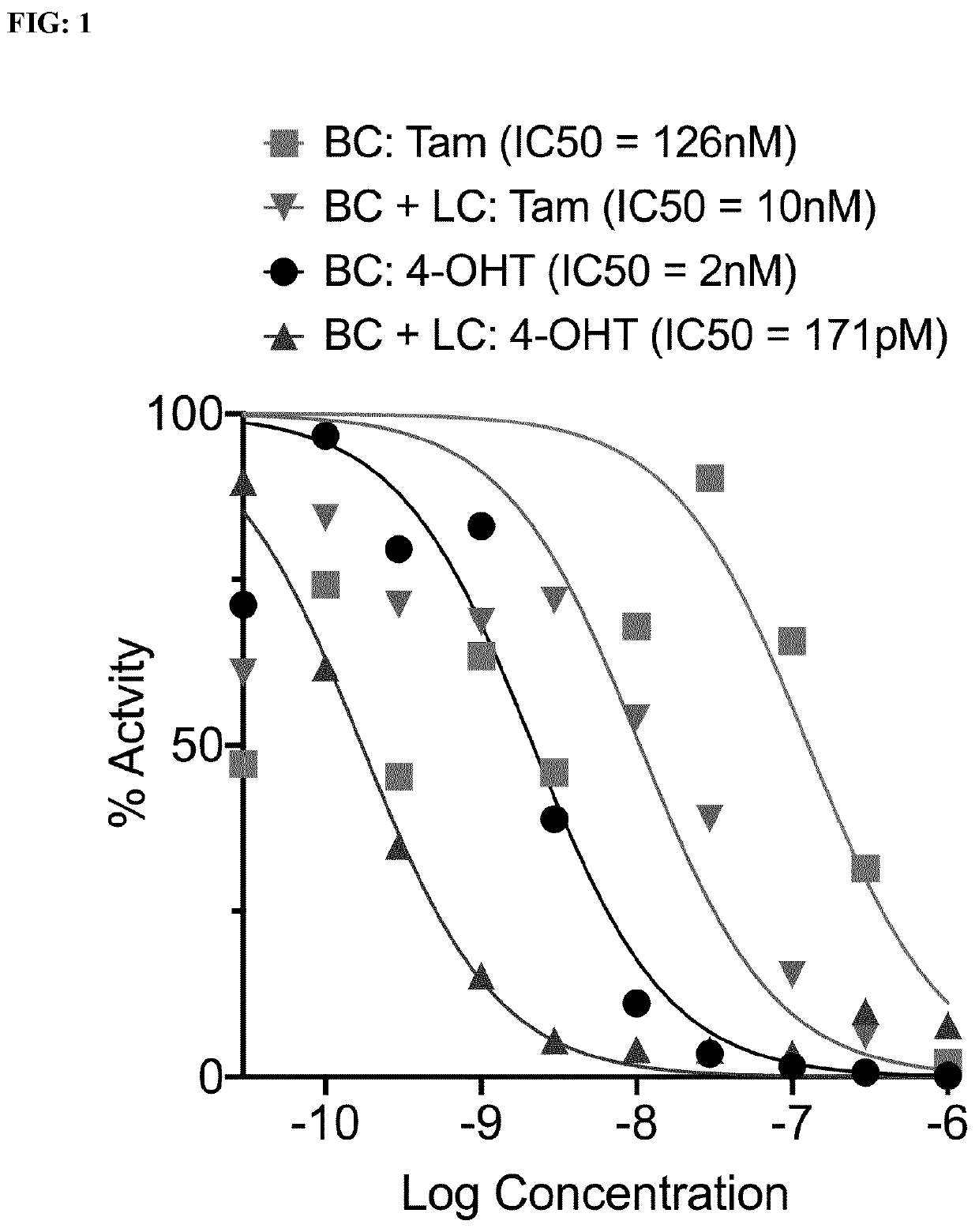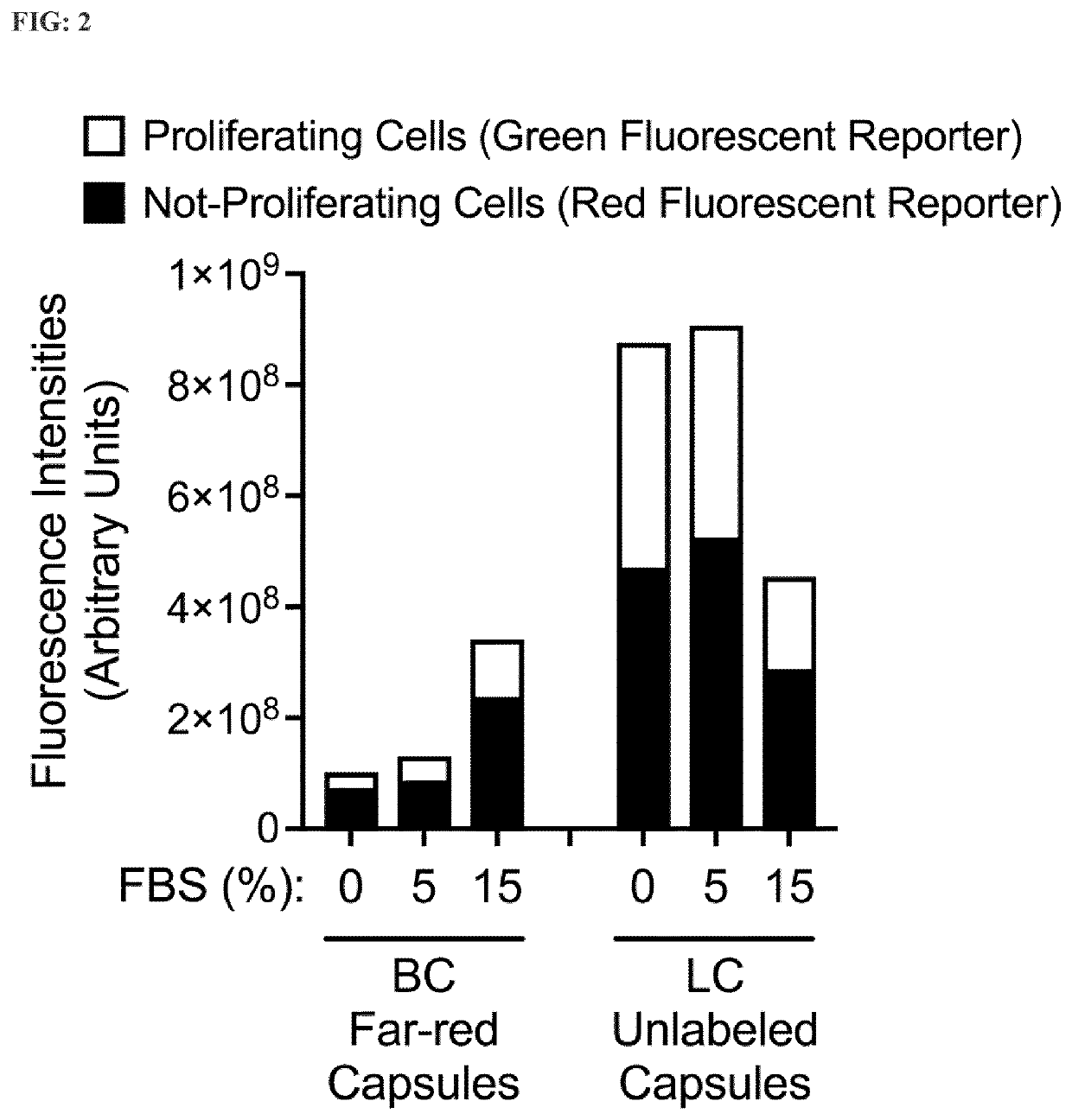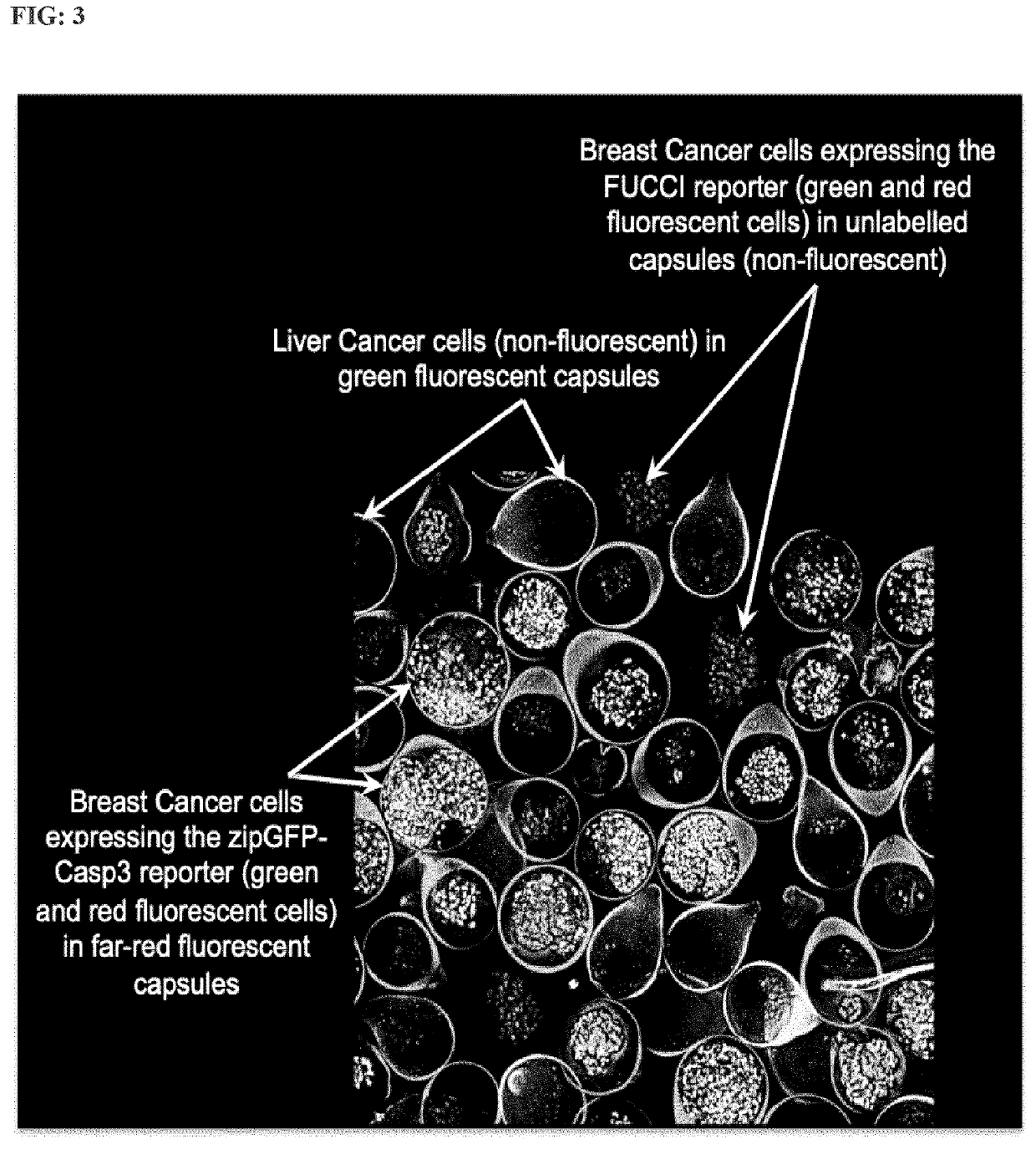Method to independently analyze multiple biological processes in encapsulated 3D cell co-cultures
a cell co-culture and encapsulation technology, applied in the field of multiple encapsulated 3d cell co-culture drug testing or screening method, can solve the problems of poor clinical relevance of cell cultures used, inability to define good candidates with desired biological effects, and high cost of vitro drug testing in terms of time and resources, so as to increase the number of biological processes, increase the repertoire of biological processes, and increase the efficiency and accuracy
- Summary
- Abstract
- Description
- Claims
- Application Information
AI Technical Summary
Benefits of technology
Problems solved by technology
Method used
Image
Examples
example 1
[0124]Description:
[0125]A monolayer of Breast Cancer (BC) cells stably expressing a luciferase reporter gene under the control of an Estrogen Response Element (MELN cells, Table 1 and 2) is co-cultured or not with encapsulated Liver Cancer (LC) cells and treated with increasing concentrations of Tamoxifen or 4-hydroxytamoxifen for 48 hours. The activity of Estrogen Receptor a in BC cells is determined by measuring the activity of Luciferase (bioluminescence intensity).
[0126]Material and Methods:
[0127]Cell Seeding for BC Cells
[0128]Aspirate the culture medium on the MELN cells (see Table 1)
[0129]Wash once with PBS and then aspirate the PBS
[0130]Add trypsin on the cells and aspirate the excess of trypsin
[0131]Incubate 5 minutes at 37° C.
[0132]Repeatedly pipette white cell culture medium (DMEM without phenol red 10% charcoal-stripped foetal bovine serum) over the cells to detach and then collect them into a tube Seed the cells in a 96-well plate with 10000 cells / well in white cell cult...
example 2
[0163]Description:
[0164]A co-culture of encapsulated BC cells stably expressing the dual-reporter FUCCI (see Table 2) in far-red-labeled capsules and encapsulated LC cells stably expressing the dual-reporter FUCCI in unlabeled capsules incubated with different serum concentrations. Amounts of active proliferating cells and not-proliferating cells (latent) are determined by quantifying the proportion of red (G1 phase) and green (G2 / S phase) nuclei both in LC cells and in BC cells simultaneously in the same co-culture wells.
[0165]Material and Methods:
[0166]Protocol for Establishing a Stable Reporter Cell Line:
[0167]Seed HEK293 cells in 10 cm-dishes at 4 million cells / dish.
[0168]Incubate for 24 hours at 37° C.
[0169]Cells are transfected with a mix of the plasmids pMD2G, psPAX2 and the lentiviral reporter plasmid of interest (pBOB-EF1-fastFUCCI-puro) by using a PolyEthylenelmine transfection method.
[0170]Add the transfection solution to the cells, and incubate overnight at 37° C.
[0171]P...
example 3
[0208]Description:
[0209]A co-culture of encapsulated BC cells stably expressing the dual-reporter FUCCI (Table 2) in unlabelled capsules, and encapsulated BC cells stably expressing the reporter zipGFP-Casp3 (Table 2) in far-red-labelled capsules, co-cultured or not with encapsulated LC cells in green-labelled capsules and treated with increasing concentrations of Tamoxifen for 96 hours. Induction of apoptosis is measured by automated confocal microscopy (HCS) in BC cells stably expressing the reporter zipGFP-Casp3 and proliferation is measured at the same time in BC cells stably expressing the dual-reporter FUCCI.
[0210]Materials and Methods
[0211]Protocol for Establishing the Two BC Stable Reporter Cell Lines:
[0212]Same protocol as for Example 2 “Protocol for establishing a stable reporter cell line” except that in addition to make a BC cell line stably expressing the dual-reporter FUCCI, Applicants have also made a BC cell line stably expressing the reporter zipGFP-Casp3 (Table2) w...
PUM
| Property | Measurement | Unit |
|---|---|---|
| size | aaaaa | aaaaa |
| concentration | aaaaa | aaaaa |
| pH | aaaaa | aaaaa |
Abstract
Description
Claims
Application Information
 Login to View More
Login to View More - R&D
- Intellectual Property
- Life Sciences
- Materials
- Tech Scout
- Unparalleled Data Quality
- Higher Quality Content
- 60% Fewer Hallucinations
Browse by: Latest US Patents, China's latest patents, Technical Efficacy Thesaurus, Application Domain, Technology Topic, Popular Technical Reports.
© 2025 PatSnap. All rights reserved.Legal|Privacy policy|Modern Slavery Act Transparency Statement|Sitemap|About US| Contact US: help@patsnap.com



